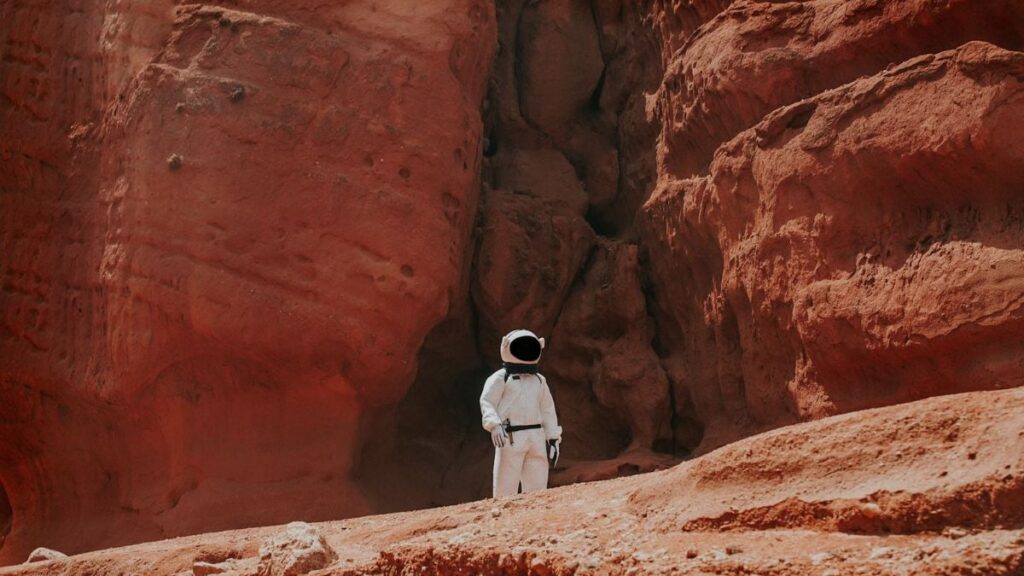Astronomer Michael Efroimsky Proposes That Mars’ Form and Landscape Might Stem from a Former Moon
Mars, the fourth planet from the Sun, stands out in our solar system due to its unique ellipsoidal shape, which is characterized by different sizes along its three axes. While the planet currently possesses two small moons, researchers like Michael Efroimsky from the U.S. Naval Observatory propose that Mars may have once harbored a much larger moon, possibly named Nerio. This ancient moon could have significantly influenced Mars’ topography, contributing to the formation of its dramatic highlands and deep valleys.
The Martian landscape is renowned for its extreme geological features, which include the Tharsis bulge—a vast volcanic region measuring approximately 5,000 kilometers in diameter and soaring up to 7 kilometers high. On the opposite side of the planet lies Terra Sabaea, another prominent highland area, accompanied by Syrtis Major, a colossal shield volcano. These features not only highlight the planet’s geological diversity but also suggest a complex history influenced by gravitational forces.
Efroimsky’s theory posits that the hypothetical moon, Nerio, may have exerted tidal forces on Mars during its early formation. Much like how Earth’s moon influences ocean tides, Nerio could have raised tides in Mars’ magma oceans, facilitating geological activity and shaping the planet’s surface. As the molten material shifted due to these tidal forces, it may have contributed to the development of the distinctive highlands and valleys we observe today.

The study, published in the online journal arXiv, suggests that remnants of Nerio’s influence could still be evident in Mars’ terrain. The interplay between the ancient moon and the planet’s geological processes may explain some of the extreme features we see on Mars, providing insight into the planet’s formation and evolution over billions of years. The loss of this moon could also be a critical factor in understanding why Mars has a distinctive shape compared to other celestial bodies.
While the existence of Nerio remains speculative, the implications of such a moon on Mars’ geological history are intriguing. If proven true, this theory could reshape our understanding of planetary formation and the role moons play in influencing the landscapes of their host planets. As researchers continue to explore Mars through missions and advanced technologies, the quest to uncover the secrets of its past, including the potential for a lost moon, remains a significant focus of planetary science.
In conclusion, the idea that Mars may have once possessed a larger moon adds a new layer to our understanding of the Red Planet. By examining the potential effects of such a moon on Mars’ geological features, scientists like Efroimsky are opening new avenues for research, prompting further investigation into the intricate relationships between celestial bodies in our solar system.


















